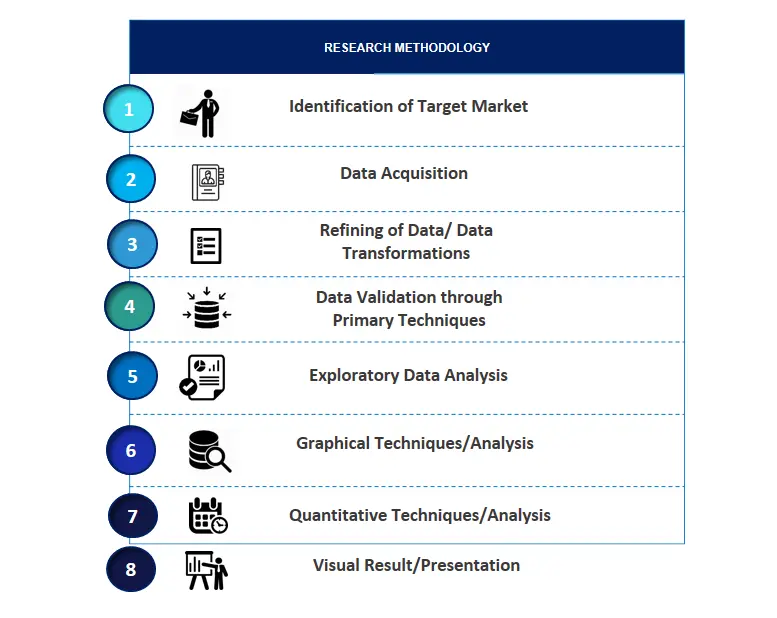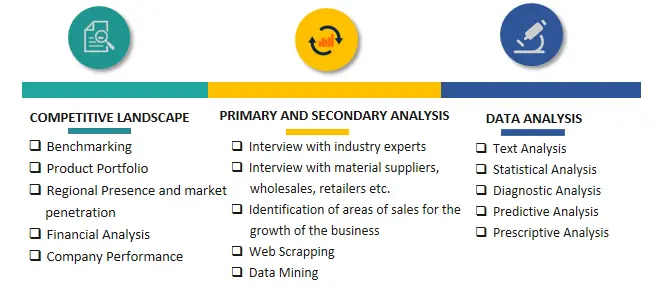
Alternative Fuel Vehicles Market Size, Trends, Growth, Revenue, Demand and Future Outlook
Alternative Fuel Vehicles (AFV) Market Size- By Fuel Type, By Vehicle Type - Regional Outlook, Competitive Strategies and Segment Forecast to 2034
| Published: Jan-2025 | Report ID: AMIN2503 | Pages: 1 - 268 | Formats*: |
| Category : Automotive & Transportation | |||

- Honda declared in November 2022 that it would construct an FCEV based on the Honda CR-V, with production starting in 2024 at its Presentation Manufacturing Center (PMC) in Marysville, Ohio. In order to achieve its overall goal of having 100% of its global car sales be battery electric vehicles (BEVs) and fuel cell electric vehicles (FCEVs) by 2040, this zero-emissions vehicle is crucial.
- An alternative fuel vehicle pilot program was started by National Fuel Gas Distribution Corporation (National Fuel) officials in June 2023. NeuFuel, an Adsorbed Natural Gas (ANG) platform created by Ingevity Corporation, is used in the initiative. When paired with renewable natural gas (RNG), this platform can cut greenhouse gas emissions by up to 125 percent, according to the Natural Gas Vehicles of America (NGVA).

| Report Metric | Details |
| Market size available for years | 2021-2034 |
| Base year considered | 2024 |
| Forecast period | 2025-2034 |
| Segments covered | By Fuel Type, By Vehicle Type. |
| Regions covered | North America, Asia-Pacific, Latin America, Middle East & Africa and Europe. |
| Companies Covered | BYD Company Ltd, Daimler AG, Ford Motor Company, Honda Motor Co., Ltd., JAGUAR LAND ROVER AUTOMOTIVE PLC, MITSUBISHI MOTORS CORPORATION, Nissan Motor Corporation, SHELL International B.V., Tesla, Toyota Motor Corporation, and others. |
- Global Alternative Fuel Vehicles (AFV) Market Size (FY’2021-FY’2034)
- Overview of Global Alternative Fuel Vehicles (AFV) Market
- Segmentation of Global Alternative Fuel Vehicles (AFV) Market By Fuel Type (BEV, HEV, PHEV, FCV, CNG, Biofuels, Others)
- Segmentation of Global Alternative Fuel Vehicles (AFV) Market By Vehicle Type (Passenger Cars, Commercial Vehicles)
- Statistical Snap of Global Alternative Fuel Vehicles (AFV) Market
- Expansion Analysis of Global Alternative Fuel Vehicles (AFV) Market
- Problems and Obstacles in Global Alternative Fuel Vehicles (AFV) Market
- Competitive Landscape in the Global Alternative Fuel Vehicles (AFV) Market
- Details on Current Investment in Global Alternative Fuel Vehicles (AFV) Market
- Competitive Analysis of Global Alternative Fuel Vehicles (AFV) Market
- Prominent Players in the Global Alternative Fuel Vehicles (AFV) Market
- SWOT Analysis of Global Alternative Fuel Vehicles (AFV) Market
- Global Alternative Fuel Vehicles (AFV) Market Future Outlook and Projections (FY’2025-FY’2034)
- Recommendations from Analyst
1.1. Scope of the report1.2. Market segment analysis
2.1. Research data source
2.1.1. Secondary Data2.1.2. Primary Data2.1.3. SPERs internal database2.1.4. Premium insight from KOLs
2.2. Market size estimation
2.2.1. Top-down and Bottom-up approach
2.3. Data triangulation
4.1. Driver, Restraint, Opportunity and Challenges analysis
4.1.1. Drivers4.1.2. Restraints4.1.3. Opportunities4.1.4. Challenges
5.1. SWOT Analysis
5.1.1. Strengths5.1.2. Weaknesses5.1.3. Opportunities5.1.4. Threats
5.2. PESTEL Analysis
5.2.1. Political Landscape5.2.2. Economic Landscape5.2.3. Social Landscape5.2.4. Technological Landscape5.2.5. Environmental Landscape5.2.6. Legal Landscape
5.3. PORTERs Five Forces
5.3.1. Bargaining power of suppliers5.3.2. Bargaining power of buyers5.3.3. Threat of Substitute5.3.4. Threat of new entrant5.3.5. Competitive rivalry
5.4. Heat Map Analysis
6.1. Global Alternative Fuel Vehicles (AFV) Market Manufacturing Base Distribution, Sales Area, Product Type6.2. Mergers & Acquisitions, Partnerships, Product Launch, and Collaboration in Global Alternative Fuel Vehicles (AFV) Market
7.1. BEV7.2. HEV7.3. PHEV7.4. FCV7.5. CNG7.6. Biofuels7.7. Others
8.1. Passenger Cars8.2. Commercial Vehicles
9.1. Global Alternative Fuel Vehicles (AFV) Market Size and Market Share
10.1. Asia-Pacific
10.1.1. Australia10.1.2. China10.1.3. India10.1.4. Japan10.1.5. South Korea10.1.6. Rest of Asia-Pacific
10.2. Europe
10.2.1. France10.2.2. Germany10.2.3. Italy10.2.4. Spain10.2.5. United Kingdom10.2.6. Rest of Europe
10.3. Middle East and Africa
10.3.1. Kingdom of Saudi Arabia10.3.2. United Arab Emirates10.3.3. Qatar10.3.4. South Africa10.3.5. Egypt10.3.6. Morocco10.3.7. Nigeria10.3.8. Rest of Middle-East and Africa
10.4. North America
10.4.1. Canada10.4.2. Mexico10.4.3. United States
10.5. Latin America
10.5.1. Argentina10.5.2. Brazil10.5.3. Rest of Latin America
11.1. BYD Company Ltd
11.1.1. Company details11.1.2. Financial outlook11.1.3. Product summary11.1.4. Recent developments
11.2. Daimler AG
11.2.1. Company details11.2.2. Financial outlook11.2.3. Product summary11.2.4. Recent developments
11.3. Ford Motor Company
11.3.1. Company details11.3.2. Financial outlook11.3.3. Product summary11.3.4. Recent developments
11.4. Honda Motor Co., Ltd.
11.4.1. Company details11.4.2. Financial outlook11.4.3. Product summary11.4.4. Recent developments
11.5. JAGUAR LAND ROVER AUTOMOTIVE PLC
11.5.1. Company details11.5.2. Financial outlook11.5.3. Product summary11.5.4. Recent developments
11.6. MITSUBISHI MOTORS CORPORATION.
11.6.1. Company details11.6.2. Financial outlook11.6.3. Product summary11.6.4. Recent developments
11.7. Nissan Motor Corporation
11.7.1. Company details11.7.2. Financial outlook11.7.3. Product summary11.7.4. Recent developments
11.8. SHELL International B.V.
11.8.1. Company details11.8.2. Financial outlook11.8.3. Product summary11.8.4. Recent developments
11.9. Tesla
11.9.1. Company details11.9.2. Financial outlook11.9.3. Product summary11.9.4. Recent developments
11.10. Toyota Motor Corporation
11.10.1. Company details11.10.2. Financial outlook11.10.3. Product summary11.10.4. Recent developments
11.11. Others
SPER Market Research’s methodology uses great emphasis on primary research to ensure that the market intelligence insights are up to date, reliable and accurate. Primary interviews are done with players involved in each phase of a supply chain to analyze the market forecasting. The secondary research method is used to help you fully understand how the future markets and the spending patterns look likes.
The report is based on in-depth qualitative and quantitative analysis of the Product Market. The quantitative analysis involves the application of various projection and sampling techniques. The qualitative analysis involves primary interviews, surveys, and vendor briefings. The data gathered as a result of these processes are validated through experts opinion. Our research methodology entails an ideal mixture of primary and secondary initiatives.



Frequently Asked Questions About This Report
PLACE AN ORDER
Year End Discount
Sample Report
Pre-Purchase Inquiry
NEED CUSTOMIZATION?
Request CustomizationCALL OR EMAIL US
100% Secure Payment






Related Reports
Our Global Clients
Our data-driven insights have influenced the strategy of 200+ reputed companies across the globe.




















